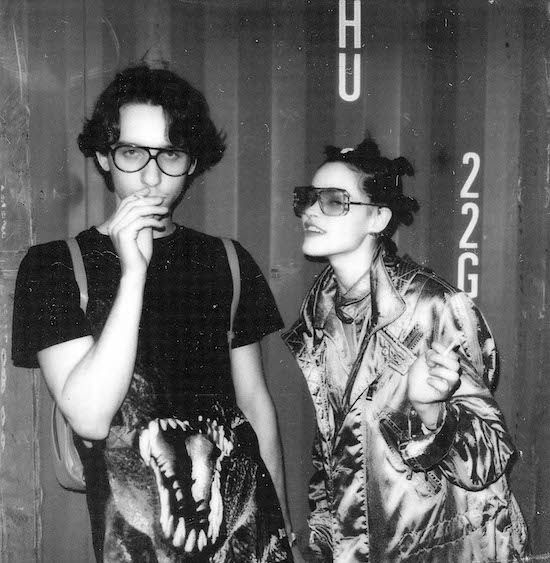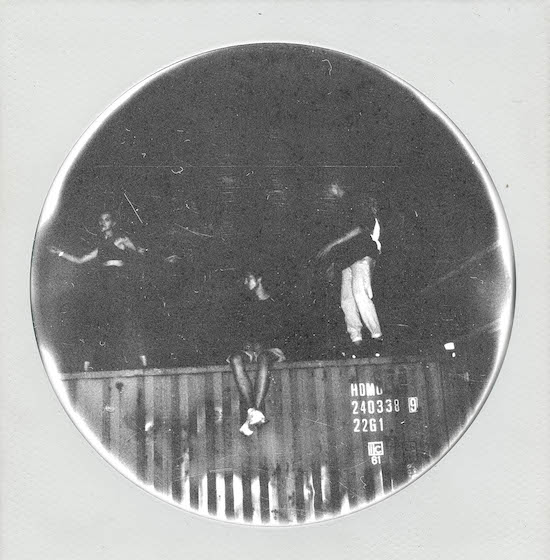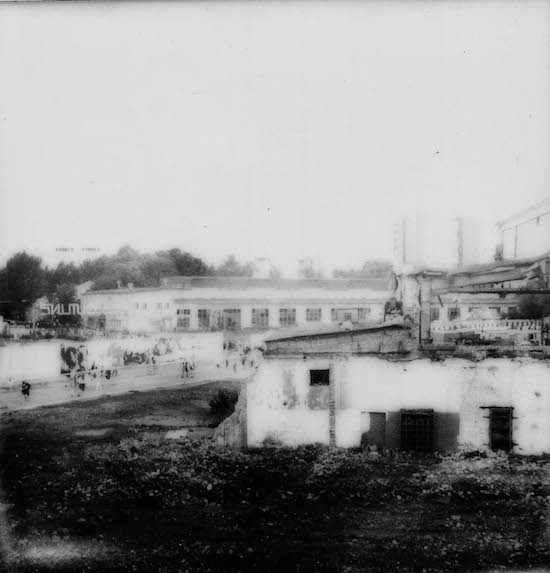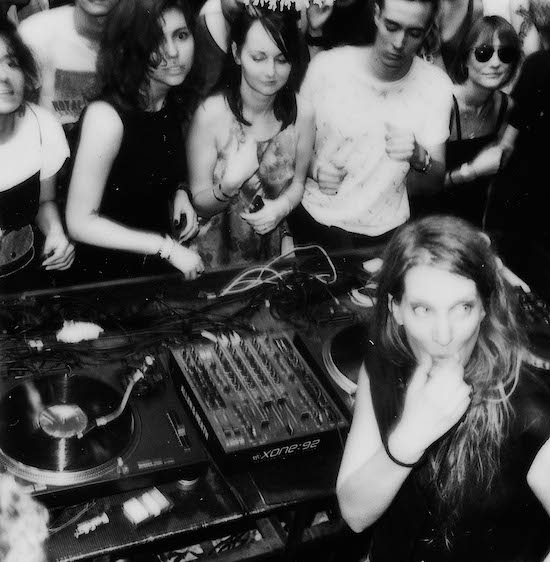It’s late on a Saturday afternoon, and we’re on a sun-kissed rooftop while Ricardo Villalobos strings out hazy minimal techno across the woodland enclave below; gentle basslines rising thick into the trees, as subdued ravers swish and stomp with sass. One of them takes a well-earned rest next to us, sighing deeply as a grin splits across her face. She turns our way and begins to chat, until the stifled pleasantries that come with the realisation that we don’t speak the same language begin. There’s a toss of the hands and a few giggles until a beat that we all recognise kicks in, and we sing the melody together: sincerely, loudly, and all with the same smile that she came our way with. "Techno karaoke is universal," I joke, and the awkwardness leaves us.
Then a hand reaches out and she leaves us, back down the staircase and into the trees. The melody we sang lilts; seems to last for the whole sunset, too, in the way that Villalobos’ playful and hypnotising blends know how to stretch out into and fill the air. "This is so sick," someone exhales. The sun sets and the cool air licks us back into life, just in time for Perlon label boss Zip to guide the minimalism home, steadier and softer into where Villalobos was reaching for. It’s the last of our marathon two-nights-and-a-day here. We feel cleansed.
It’s my first trip to the Russian capital, for a techno festival that kept us away from the imposing, often contradictory grandeur of the metropolis, and nobody in our group seems to have much of an idea of what to expect. The line-up for the third instalment of Outline Festival is impressive – the most commercial name on the bill is hometown star Nina Kraviz, the rest studied choices from the UK, Eastern European and Russian undergrounds, in the main – and the chance to party amongst a non-Anglophone crowd is always welcomed. But as for the usual good-time factors (the temperament of the crowd, ease of the schedule and just how much of the vibe its possible to distill into a personal experience of how techno is played and absorbed), I’m curious to the point of uncertain. Mercifully, though, Outline overwhelmingly impresses.
Set across a sprawling outdoor industrial stretch of land around the Karacharovsky Mechanical Plant, just off a vast motorway through the centre of Moscow, the attention to detail on site from the Arma17 club-turned-festival hosts is less about managing a crowd into compacted arenas, and more about allowing the audience to discover the festival at their own pace. The half dozen "stages" aren’t clearly signposted. It’s not clear that they’re stages at all, frankly: vast concrete chambers filled with debris and red-lit enclaves adorned in Cyrillic lettering, down through wooded hills and around towering cranes fitted out as sculptural waterfalls.
Orange and yellow spotlights splice across murals on crumbling walls, while shipping containers and wooden cabins function as loose demarcations between paths, and around a small, purpose-built skate park. ("You could never get away with a setting like this in the UK," chimes one of our crew, "You’d get bloody strangled by health and safety!") While it would be easy to assume that Arma17 have just checked off their "moody landscape" list with all of the above, like a hackneyed, Secret Cinema-esque manifestation of just how grimey and "authentic" this sort of festival could look, it genuinely feels as if we’re wandering into a powerfully-soundtracked lost town rather than a bought-in experience of physical and sonic wilderness.
Once we realise that we’re happily out of our usual festival comfort zone, it’s not hard to thrive. It helps that the predominantly Russian ravers come across as a sophisticated crew, too. There’s no festival "look" akin to the style of the UK circuit. No ‘Topshop was raided’ of the standard #Glasto summertime wares of floral headbands, denim shorts and Hunter wellies. Here, Jimmy Choo handbags vibe with battered Nikes, floor length dresses with bomber jackets. However fascinating the discernable lifestyle uniforms of myriad underground clubbing tribes can be, the anonymity of being absorbed into the fray here feels easy, and welcome. In the best possible way, it feels like no one gives a shit – here to dance and disappear, more than anything else.

Most importantly, though: the music. Ricardo Villalobos’ set is one of many displays of a decidedly more minimal and abstracted sound that less dominates, more frames the weekend. When you have a festival that runs non-stop from 10PM on a Saturday until 11PM on a Sunday, there’s a temptation to style it as a full throttle, Berghain-esque lockdown. But in an open-air setting where sunrises and sunsets dictate the mood and flow of bodies, the subtle strands of variety within this more pared-down sound, tempered with more performance-focused acts, play out extremely well. The compacted timeframe doesn’t feel rushed, and the population of 7000 keeps it from ever feeling claustrophobic.
By 4AM at the Woodz stage, the hardy ones who have kept dancing amongst the trees fizzle out in a near-perfect mirror image to the final movements of Moscow-based live hardware house duo Poima. When Ben UFO steps up, he takes a quick scan of the crowd and drops a scattering breakbeat that soars; making tired eyes emerge from behind sunglasses and the early-morning air shiver. These harder, more unexpected moments help frame the international contingent, too: setting up a nuanced diversity of sounds as the weekend rolls on.
Tougher bursts of 4/4 techno rumble hot and heavy in the main hall from Daniel Avery, followed strong by Ukraine’s Nastia and then smashed through the narrow, floor-to-ceiling windows by Nina Kraviz, while a short walk away in the aptly named canyon of the Dark stage, Andy Stott and Demdike Stare draw out cataclysmic machinations to a backdrop of spot-lit, stained glass grid; reds and yellows glowing intensely in the dull.

Droning vocal breakdowns accentuate a disintegrating jungle sound that rattles off walls and hit the back of the throat like a prolonged nosebleed – and people are going nuts for it. While London has been enjoying a more widespread and fashionable revival of industrial, hardware-centric techno for a couple of years now, having Andy Stott and Demdike Stare jar against the more tempered Russian and Eastern European DJ offerings makes them sound all the more gargantuan and vital – not a revisiting of familiar clubbing territory in a new, strange setting.
More pointedly, Outline makes a real investment in performance. Of the 53 acts across the weekend 23 are live solo artists, or loose configurations of bands: from Xosar’s acid drenches and Heatsick’s oddball techno experimentations, to Egyptian Lover’s classic West Coast electro-funk and Mathew Jonson’s hardware workout (as Cobblestone Jazz), nearly half the festival goes down the live route when it could easily rely on big-name DJs to fill the purposefully sparse surroundings – which is no small feat or faint praise.
At the risk of pure speculation, perhaps this is down to a different mindset in Moscow. The swell of mainland European festivals in recent years has brought underground dance music to the masses like never before, but scanning through the myriad line-ups often leaves me doing a blur of double takes. Familiar names crop up time and again as headliners, with a core selection of crossover acts positioned to pull in the sales and a pack out three, four, even five day schedules that have your knees wobbling at the mere thought of working through. By disregarding more press-savvy UK, North American and European names, treating a home crowd to stunning sound systems and a daring setting, Outline is a unique creature.
It feels all the more special, too, when we find out on departure that the degradation around us went beyond aesthetics. Like many recent clubbing spaces in the city, the Karacharovsky Mechanical Plant is due to be demolished in the next year as part of a continued onslaught of rapid urban planning (and re-planning, considering the tales we were told of how quickly edifices appear and disappear from the Moscow landscape, with barely a fanfare), and so Outline won’t even be hosted here in 2016.

This shouldn’t put off international visitors from becoming part of the Outline fray, though. With such attention to detail and investment in the experience, their next site will surely be as impressive and original as this one. If you’re happy to take the four or five-hour flight from the UK, and pay that bit extra for a tourist visa (unfortunately necessary but, factored into the trip with enough planning, not a deal-breaker), then you may well find Outline etched into your minds’ eye for a long time after. It will certainly be in mine.


